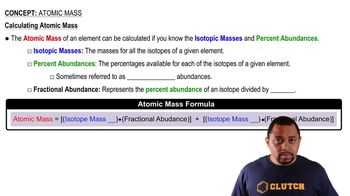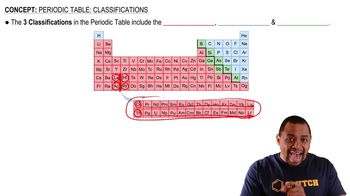Here are the essential concepts you must grasp in order to answer the question correctly.
Isotopes
Isotopes are variants of a chemical element that have the same number of protons but different numbers of neutrons, resulting in different atomic masses. For example, boron has two stable isotopes, 10^B and 11^B, which differ in their neutron count and thus their mass. Understanding isotopes is crucial for calculating the average atomic weight of an element based on its isotopic composition.
Recommended video:
Atomic Weight Calculation
The atomic weight of an element is calculated as the weighted average of the masses of its isotopes, taking into account their relative abundances. This involves multiplying the mass of each isotope by its percentage abundance (expressed as a fraction) and summing these values. For boron, the calculation would involve the isotopic masses of 10^B and 11^B, weighted by their respective natural abundances.
Recommended video:
Periodic Table
The periodic table is a tabular arrangement of chemical elements, organized by increasing atomic number and grouped by similar properties. It provides essential information, including the atomic weight of elements, which is often a decimal value reflecting the average of all isotopes. Checking the atomic weight of boron on the periodic table can confirm the accuracy of calculations made using isotopic data.
Recommended video:
Periodic Table Classifications




